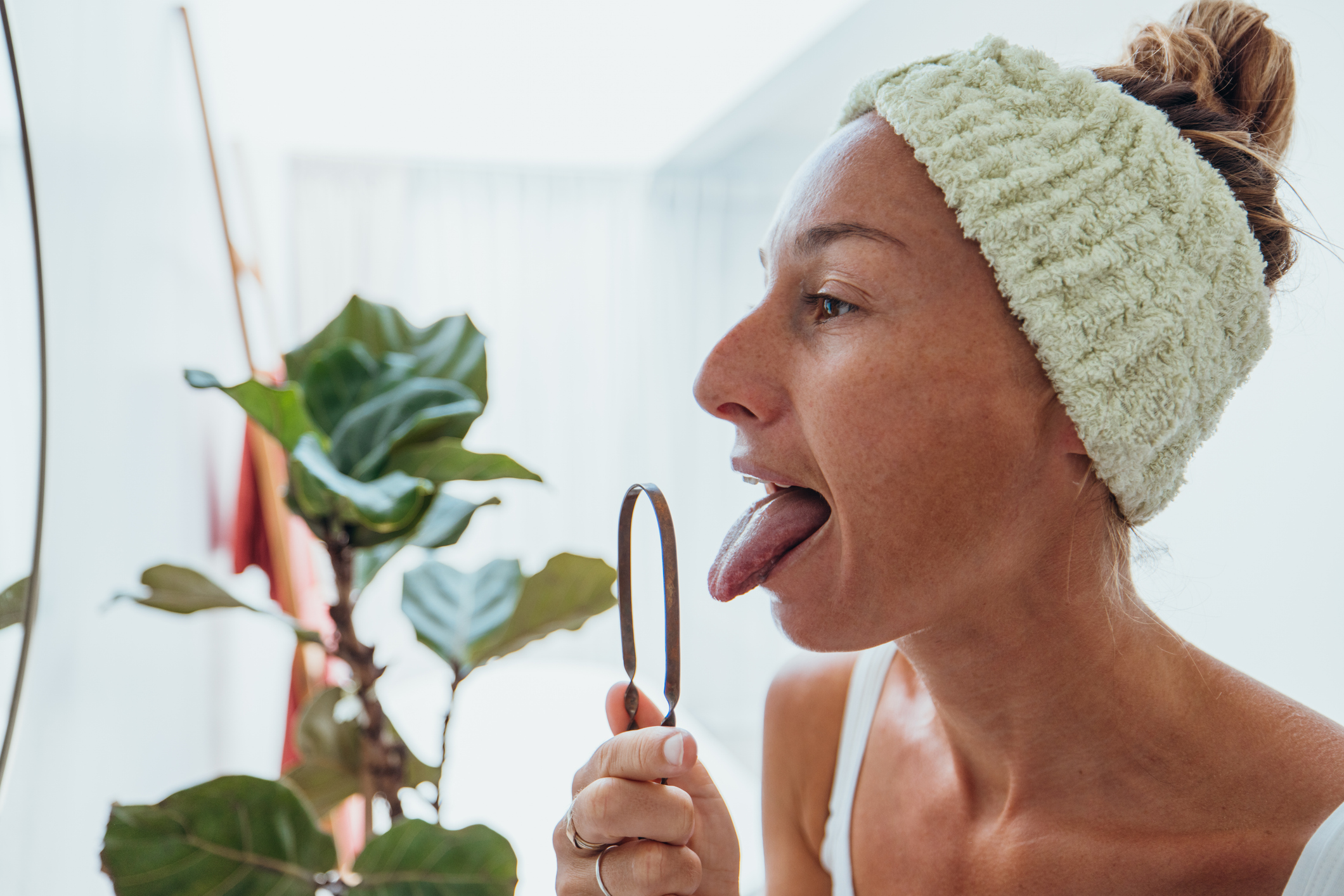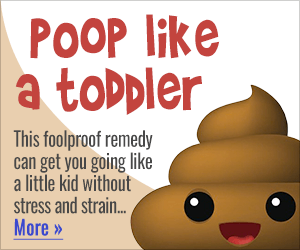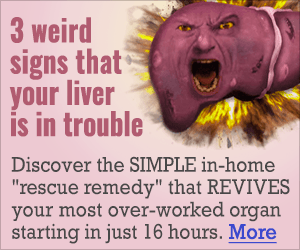Get Easy Health Digest™ in your inbox and don’t miss a thing when you subscribe today. Plus, get the free bonus report, Mother Nature’s Tips, Tricks and Remedies for Cholesterol, Blood Pressure & Blood Sugar as my way of saying welcome to the community!
Need an excuse to clean your tongue? Try these alarming conditions

Brush your teeth two to three times a day, and don’t forget to floss.
That’s the mantra we’ve heard since childhood, and the advice most of us follow when it comes to our oral health. But something is missing in that advice.
That’s because if you’re not also cleaning your tongue, you’re not getting rid of smelly bacteria that still produce bad breath. But there’s another significant reason to make a clean tongue a habit…
Your tongue: a window to your health
When your doctor asks you to stick out your tongue and say “ahhh,” there’s plenty he can see beyond signs of a sore throat, issues with tonsils, drainage or infection.
They’re also looking at your tongue itself, which can offer insight into your overall health, including nutritional deficiencies, oral cancer or underlying conditions that the color and surface of your tongue can reveal.
Your doctor also looks closely at the direction of your tongue when you stick it out. They’re looking for deviations to one side, which can signal a brain lesion, stroke or carotid dissection.
What does that stuff on your tongue indicate?
Luckily, cleaning your tongue is an easy way to do a quick health assessment and sweep away the plaque and microbes that can lead to bad breath.
Be sure to note any changes in how it looks or feels so you can talk to your doctor as needed.
Some signs you might see include:
- White coating – A white coating is standard and usually not something to worry about. This change generally occurs if you’ve skipped out on your regular oral health routine due to plaque buildup, food debris and microbes. It’s your body telling you to get back to brushing!
- Yellow coating – If you see a yellow coating on your tongue, it could be time to see your doctor since this color indicates a fungal infection, such as oral thrush, which is common among older people and diabetics. It can also develop due to antibiotic use, which kills off the good bacteria in your oral microbiome.
- Red tongue plus yellow coating – Research has even shown that your tongue can reveal heart failure. Normal tongues are pale red with a pale white coating. Heart failure patients have a redder tongue with a yellow coating, and the appearance changes as the disease progresses.
- Black coating – A black, hairy-looking tongue is often due to a combination of poor oral hygiene and smoking, drinking lots of coffee or tea or taking certain medications. Most of the time, you can get rid of this coating by simply improving your oral hygiene at home. However, in some cases, the coating can result from an overgrowth of bacteria or fungi, which requires antibiotics or antifungal medications.
- Pink patches – Patches that are smooth and red, often with slightly raised borders, that make your tongue look like a map are called geographic tongue. It’s an inflammatory but generally harmless condition.
- White or red patches – On the other hand, if you have patches that are either white or red, which cannot be scraped off, have been there a long time or have grown, be sure to see your doctor or dentist, since these could be a sign of cancer.
Other issues to note include dry mouth, which can be caused by certain medications, including antihistamines, antidepressants, muscle relaxants and more.
And be aware of any pain or inflammation, since a sore, red tongue could be due to a lack of vitamin B12 or folic acid, ulcers or injuries.
Cleaning your tongue each time your brush your teeth gives you the chance to proactively get ahead of health conditions you may need to alert your doctor about.
How to clean your tongue
To clean your tongue, you can either use a plastic or metal tongue scraper or gently scrub your tongue with a regular toothbrush.
For the freshest breath, you’ll probably want to choose a tongue scraper. Research that assessed two separate studies found that they are more effective than toothbrushes in reducing the volatile sulfur compounds that cause breath odors.
To use a tongue scraper:
- Stick out your tongue.
- Place the scraper at the back of your tongue and slowly pull forward, applying gentle pressure.
- Spit out excess saliva and rinse your mouth and tongue scraper with warm water.
- Repeat two to three times.
A healthy tongue after cleaning should be dark pink. If it’s not, bring it up to your dentist or doctor.
Editor’s note: Do you know that poor gums and teeth are linked to the number one killer in America? Not to mention kidney disease… rheumatoid arthritis… Parkinson’s disease… depression… and so much more. Click here to discover America’s Hidden Dental Health Crisis: How to protect yourself and your family from this dangerous public health peril!
Sources:
Yes, you do need to clean your tongue. Here’s how and why — StudyFinds
Black Hairy Tongue — Cleveland Clinic
Geographic Tongue — Mayo Clinic















